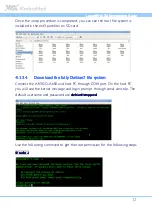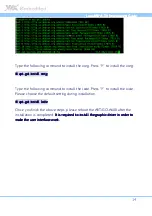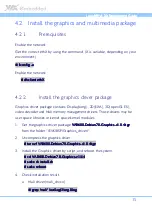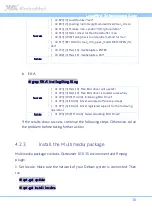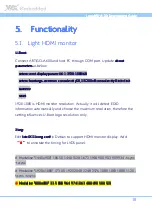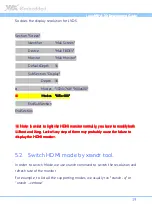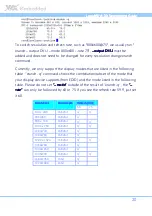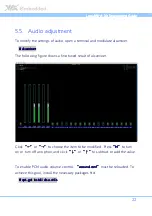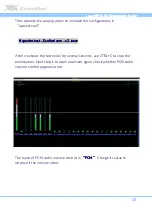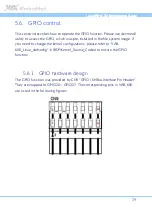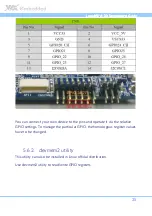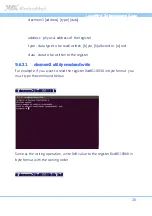
Linux BSP v1.
Linux BSP v1.
Linux BSP v1.
Linux BSP v1.2
2
2
2....0
0
0
0 Development
Development
Development
Development Guide
Guide
Guide
Guide
11
rootfstype=ext3 noinitrd mbtotal=${mbsize} ${bootargs-common} ${bootargs-extra}"
setenv wmt.plla.param 1:792:1:2:1:1:1
setenv wmt.plla2.param 1:792:1:2:1:1:1
saveenv
reset
Default display setting
“
setenv wmt.display.param 4:6:1:1920:1080:60
”
lights HDMI.
4.1.3.2.
4.1.3.2.
4.1.3.2.
4.1.3.2.
Format the
Format the
Format the
Format the SD card
SD card
SD card
SD card
Insert the SD card into the host PC. Open the Disk Utility (System-
>Administrator->Disk Utility)
If the SD card is already formatted, we need to umount volume first. Then
Delete the Partition to get a clear SD card. Click “Create Partition” to continue.
Click the SD card reader. Create a
FAT
FAT
FAT
FAT
partition with
200MB
200MB
200MB
200MB
and name it
kernel.
kernel.
kernel.
kernel.
Create an
EXT3
EXT3
EXT3
EXT3
partition with the remaining space (about 3.7GB) and name it
fs
fs
fs
fs
. Then you will get a SD card with FAT and ext3 partition.
4.1.3.3.
4.1.3.3.
4.1.3.3.
4.1.3.3.
Install
Install
Install
Install the
the
the
the kernel and root filesystem to SD
kernel and root filesystem to SD
kernel and root filesystem to SD
kernel and root filesystem to SD card
card
card
card
Copy the kernel Image
uzImage.bin
uzImage.bin
uzImage.bin
uzImage.bin
to
kernel
kernel
kernel
kernel
partition.
Use the following command to unzip the root file system to the
ext3
ext3
ext3
ext3
partition
on SD card.
# tar -zxvf
armel
armel
armel
armel----rootfs
rootfs
rootfs
rootfs----201310
201310
201310
20131003_v0.01.tar.tgz
03_v0.01.tar.tgz
03_v0.01.tar.tgz
03_v0.01.tar.tgz
-C /media/fs
















